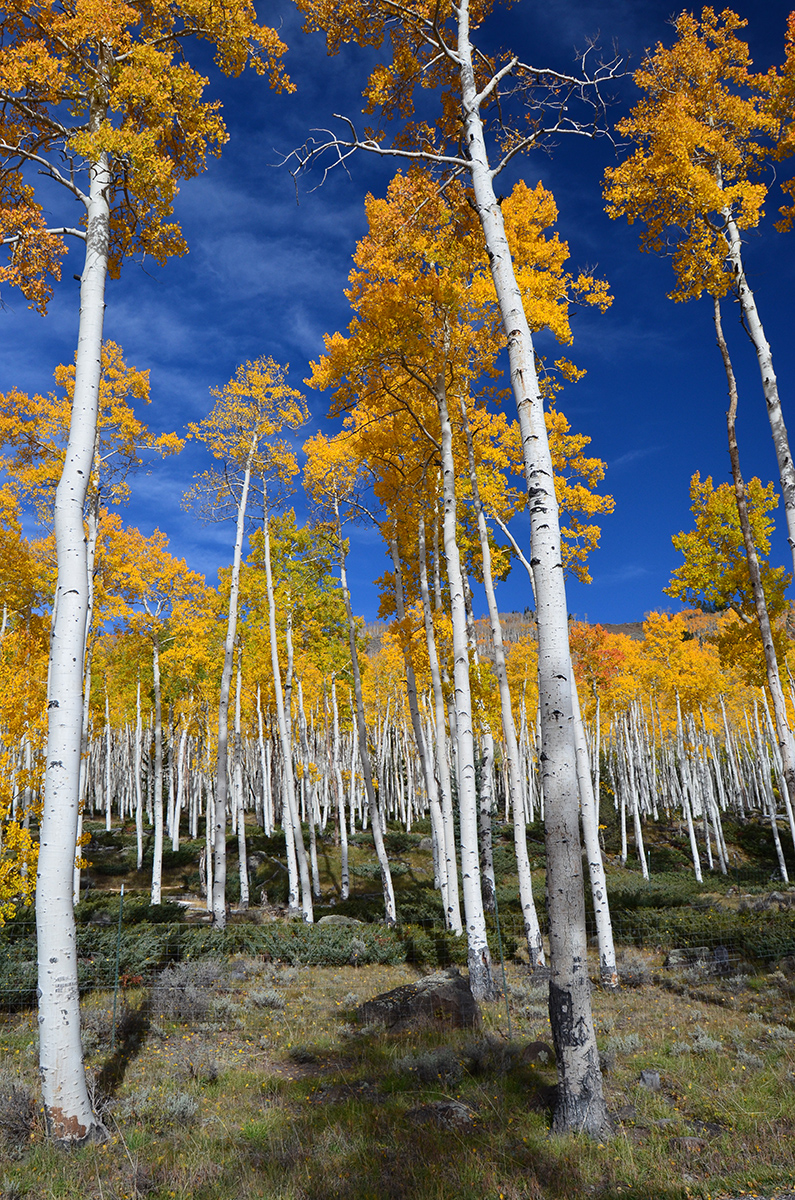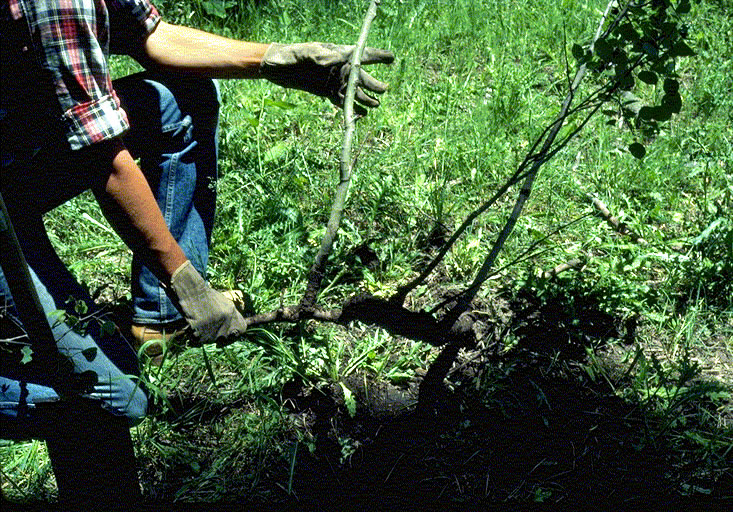
FEATURE — The Utah state tree since 2014 is the quaking aspen, one of North America’s most beautiful trees with its white peeling trunks, smooth spade-shaped leaves that tremble in the wind and turn brilliant yellow in the fall. This popular poplar stands no chance of extinction for its fierce self-propagation, a quality that makes the aspen resilient but difficult to manage in a controlled landscape – difficult but not impossible.
A Utah State University Extension horticulturist outlined tips in an article released this week that can help homeowners and landscapers incorporate aspens into non-native environments and even keep them healthy and happy with care.

Pando is located in Fishlake National Forest and is believed to be the largest organism ever found weighing nearly 13 million pounds, according to the Forest Service, and spreading over 106 acres with more than 40,000 individual trees. Fishlake National Forest, Utah, date not specified | Photo by J Zapell courtesy of the U.S. Forest Service; St. George News
Naturally, aspens grow on moist uplands, dry mountainsides, high plateaus, mesas, avalanche chutes, talus, parklands, gentle slopes near valley bottoms, alluvial terraces and along watercourses, according to Utah State University Extension’s webpage on the quaking aspen. It is most common at elevations between 6,000 and 10,000 feet.
Aspens grow in clones from a single root system, a quality that inspired a group of fourth grade students at Monroe Elementary in Sevier County to suggest the Legislature substitute the aspen as its official state tree. The students said the aspen “reminds them of Utah where we all work together to reach new heights,” according to Utah Online Library.
That strong root system also appealed to Sen. Ralph Okerlund, the Library states, because of Utah’s emphasis on family history and genealogy.
Okerlund took the idea to the state Capitol and by May 2014, the quaking aspen had been named the new official tree of Utah with Gov. Gary Herbert signing the legislation before Monroe Elementary students that March. According to the Online Library, the governor used a chair, desk and 13 pens all made of quaking aspen during the signing ceremony.
The oldest known clone of aspens is known as Trembling Giant or Pando, which is Latin for “I spread.” It is located 1 mile southwest of Fish Lake on state Highway 25 in Fishlake National Forest north of Bryce Canyon National Park in central Utah. The National Park Service and others say the Pando clone is 80,000 years old.
When planted outside its native habitat, however, the aspen often struggles and has a much shorter life span – anywhere from five to 15 years – according to the article by horticulturist Taun Beddes released by USU Extension. The shortened life span of aspens in non-native growing environments is often because of insect and disease problems, he said, and nutrient deficiencies from stress.
Nonetheless, Beddes suggests it is possible to plant and enjoy aspens in home landscapes even if only to be enjoyed for the trees’ shorter lifetime.
Following are tips the USU Extension horticulturist offers for keeping aspens healthy and happy at home:
Surface roots and suckers
Aspens form surface roots and primarily propagate by sending out root suckers that form new trees connected to the mother plant (these create the clones in native habitats). This quality can make mowing around them difficult so planning your planting of aspens ought take this propensity for suckers into consideration.
To contain roots, one possible solution Beddes offers is to surround the rootball of newly planted trees with a cement or rust-proof metal ring 3 to 4 feet beyond the root system and about 2 feet deep.
Another possible solution to the root and sucker problem is the use of products such as Sucker Stopper. Spray the product on newly cut suckers to slow or prevent sucker formation from the spot where it is sprayed. This control method is not perfect, however, Beddes said, and is only good for one season. The spray can cost $20 to $60 per bottle, depending on the concentration.
Aspens do not usually grow large enough to damage foundations or cement due to their short lifespan outside their native habitat.

Landscaping with aspens
Even with their limitations, aspen can still be used in moderation in controlled landscapes if managed properly.
It is important to plant trees in a location where suckering will not be a problem such as landscape beds that are well away from turf areas.
Aspens can be enjoyed as long as they are healthy, Beddes said, and then cut down when they begin to decline.
Younger trees, formed by root suckers, will quickly mature and sustain the stand. If wanted, the young trees should be watered to a depth of 2 feet every two to four weeks.
Beddes does not recommend overly treating the trees with chemicals when problems occur regularly. Homeowners can easily spend more money on pesticides, she said, than the purchase price of a replacement tree.
Columnar Swedish aspen
Columnar Swedish aspen is similar to America’s native species but taller and narrower when mature. It is relatively new to the landscape, Beddes said in his article, and seems to send fewer root suckers. However, it is still susceptible to pests and diseases like the native aspen and can decline rather quickly.
Alternatives to aspens
Trees Beddes suggests as replacements for aspen include chanticleer/Cleveland pear, Queen Elizabeth maple, Tatarian maple, black alder, various crabapples and Sargent cherry.
The alternatives don’t look exactly like aspens, he said, but have their own ornamental qualities and are usually much less susceptible to pests and diseases. And, they live much longer.
Resources
- Utah State University Extension Horticulturist Taun Beddes: Email [email protected] | telephone 801-851-8465
Email: [email protected]
Twitter: @JoyceKuzmanic @STGnews
Copyright St. George News, SaintGeorgeUtah.com LLC, 2016, all rights reserved.
Aspens do not do well in the climate of St George. At higher elevations, such as Diamond Valley or Dammeron, they can be grown successfully, but you will see very few, if any, growing in St George proper. I think you do a disservice to the readers in suggesting that they can grow them here with any measure of success.